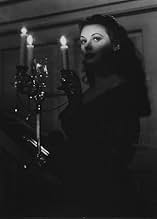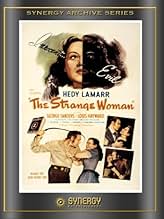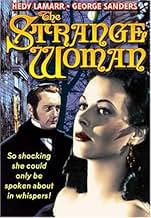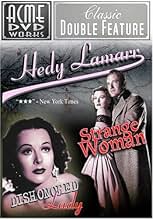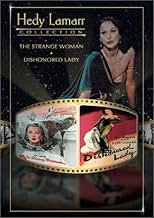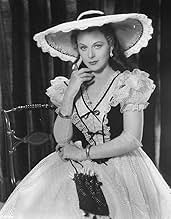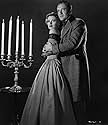Nel 1820, nel New England, Jenny Hager, donna attraente ma povera e manipolatrice, sposa il ricco Isaiah Poster, più vecchio di lei, seducendo anche suo figlio e il caposquadra della sua com... Leggi tuttoNel 1820, nel New England, Jenny Hager, donna attraente ma povera e manipolatrice, sposa il ricco Isaiah Poster, più vecchio di lei, seducendo anche suo figlio e il caposquadra della sua compagnia.Nel 1820, nel New England, Jenny Hager, donna attraente ma povera e manipolatrice, sposa il ricco Isaiah Poster, più vecchio di lei, seducendo anche suo figlio e il caposquadra della sua compagnia.
- Regia
- Sceneggiatura
- Star
- Congregation Member
- (non citato nei titoli originali)
- Congregation Member
- (non citato nei titoli originali)
- Sailor in Saloon
- (non citato nei titoli originali)
- Mrs. Thatcher
- (non citato nei titoli originali)
- Congregation Member
- (non citato nei titoli originali)
- Mr. Partridge
- (non citato nei titoli originali)
Recensioni in evidenza
I don't want the youngest. I want the richest!
Well well, what an intriguing little period noir this is. Story deals with Jenny Hagar (Lamarr), a strong and scheming woman who in 1840s Bangor in Maine, uses men for her own gains whilst exuding a double persona that shunts her into the upper echelons of the town's standings. But, as we become privy to Jenny's back story and psychological make-up, you can feel that cloud of pessimism closing in.
There will always be arguments put forward about if the likes of The Strange Woman should be classed as noir or not, but with Ulmer and Andriot cloaking the tale with claustrophobic shadows and low lights, the blacks and whites atmospherically used, thus the visuals are in place to marry up with the story, and what a story.
Jenny Hagar is a classic femme fatale, in fact fatalistic could be her middle name. We get a sneak peak of her deviousness as a child, and then we see her as a luscious older beauty, dangling men around her fingers and fully committed to marrying purely for money. What follows Jenny around is murder, suicide, incest, seduction, greed, violence and alcoholism! And of course, self-destruction.
Jenny has no qualms about who she tramples on to achieve her ends, but the kicker in her story is that she does have good in her fighting to get out, she can be charitable at times, and as we come to understand her upbringing she even garners a level of sympathy from the audience. It's this dual aspect of her make-up that intrigues greatly, but she's fighting a losing battle, more so as Bangor is the wrong place for her, itself a confused mess of unsavoury or spoilt characters.
There were problems behind the scenes, but so many conflicting reports exist it's hard to know what is true and who was pulling the main strings. What we do know is that Ulmer, armed with a bigger budget than usual, has crafted a moody and daring picture that strikes devilish notes without banging the drum too loudly. Striking scenes and imagery are many, thunderstorm seduction, lairy lumberjacks, river of death and the big finale are just some of the moments showing what Ulmer was capable off.
While Lamarr, for her pet project to move her into darker roles and be taken seriously as an actress, turns in a top performance. Unafraid of the material, she cuts loose with a blend of sexual dynamism and troubled soul. Around her are fine performances from Lockhart, Hayward and Brooke, though Sanders is a touch out of place. The pace sometimes sags, and motivations and actions of support characters could have been more fleshy, but in the main this is well worth taking a stroll down a dark alley for. 7.5/10
This may be Hedy Lamarr's most challenging role, and she acquits herself quite well. George Sanders appears infrequently as a sympathetic character, but even he is victimized by the Scarlett O'Hara-like wiles of Hedy. That both of these performers have accents that are not suggestive of born-and-bred Maine residents should not constitute more than a minor annoyance. The picture has more than enough offsetting merits.
If you can put aside the fact that the lead character has a Viennese accent and her father an Irish one when they are both lifelong natives of Bangor, Maine then there is much to enjoy. Hedy, stunningly beautiful as always, plays a deeply conflicted woman well and though the film veers wildly from morality tale to lurid melodrama it is certainly more fun than a lot of more highly thought of films.
Lo sapevi?
- QuizExecutive producer Hunt Stromberg declared his dissatisfaction with the original opening sequence of Edgar G. Ulmer's own daughter Arianne Ulmer who played the young Jenny - she was purportedly not nasty enough - and so he and Hedy Lamarr enlisted Douglas Sirk to re-shoot the scenes using Jo Ann Marlowe who had appeared in Sirk's own Uno scandalo a Parigi (1946) earlier that year, and who had also featured as Joan Crawford's daughter Kay in Michael Curtiz' Il romanzo di Mildred (1945).
- BlooperEphraim paints "Nöel" rather than the correct "Noël."
- Citazioni
Lena Tempest: Honey, listen, with your looks you don't have to worry. You can get the youngest and best-looking man on the pier.
Jenny Hager: I don't want the youngest. I want the richest.
- Versioni alternativeVenere peccatrice (1946). Restoration Produced by Jeff Joseph/SabuCat. Digital scan by Film & Video Transfer, Chatsworth, CA. Cineaste Restoration - Thad Komorowski.. Final Conforming & Cleanup by The Finishing Touch. The Strange Woman (Restored Version) copyright 2020 Jeff Joseph/SabuCat.
- ConnessioniFeatured in Edgar G. Ulmer: The Man Off-Screen (2004)
- Colonne sonoreWhat Can You Do with a Drunken Sailor?
Traditional
Early 19th Century sea chanty
[Heard in tavern]
I più visti
- How long is The Strange Woman?Powered by Alexa
Dettagli
- Data di uscita
- Paese di origine
- Siti ufficiali
- Lingua
- Celebre anche come
- Flor de insidia
- Luoghi delle riprese
- Aziende produttrici
- Vedi altri crediti dell’azienda su IMDbPro
- Tempo di esecuzione
- 1h 40min(100 min)
- Colore
- Proporzioni
- 1.37 : 1

